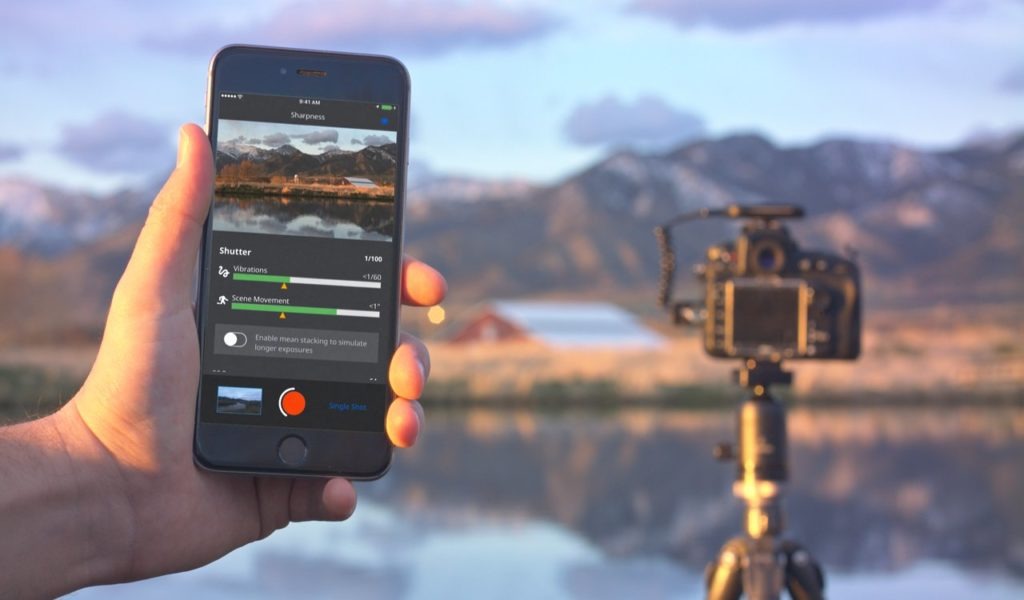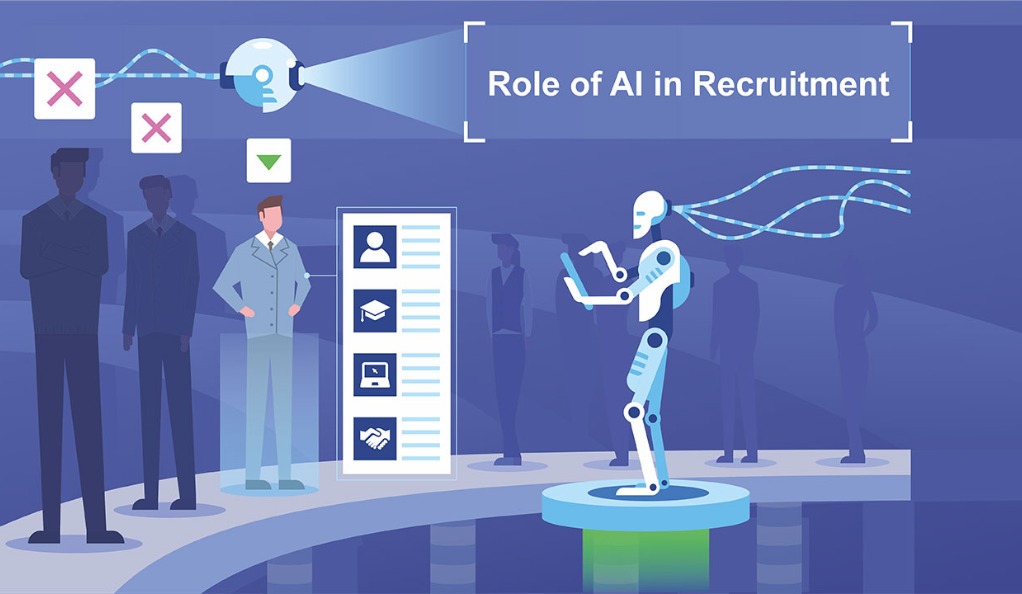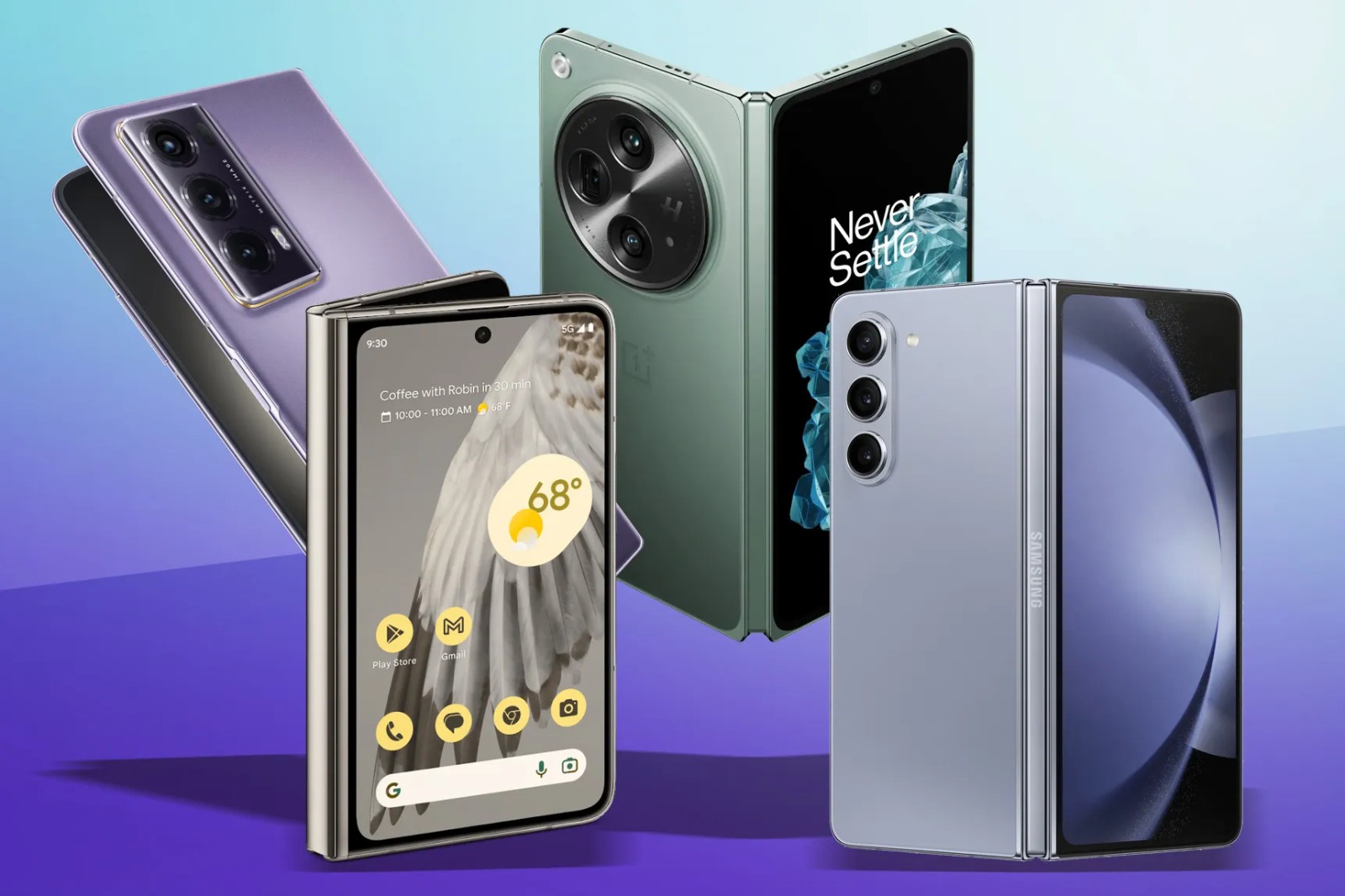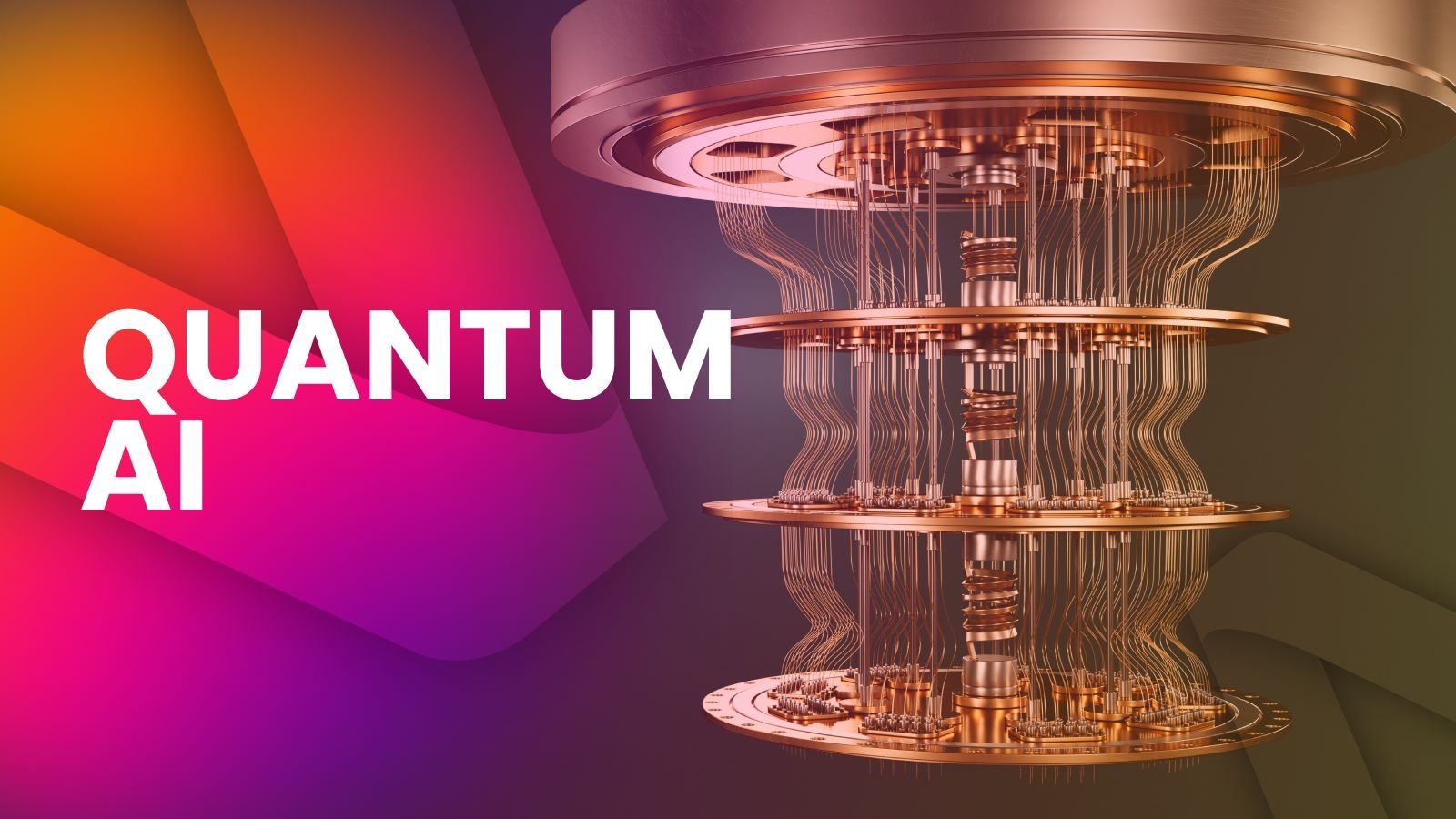
How AI Cameras Are Changing Mobile Photography.
AI-powered cameras are revolutionizing mobile photography by combining intelligent scene recognition, computational photography, real-time optimization, and advanced post-processing. From low-light enhancements and portrait effects to super-resolution zoom and automated editing, AI transforms smartphones into professional-grade imaging tools. This technology empowers creativity, simplifies complex photography, and redefines how users capture, enhance, and share memorable moments effortlessly.
✨ Raghav Jain

Introduction: The Smart Eye Behind the Lens
Over the past decade, smartphone cameras have evolved from simple image-capturing tools to intelligent visual systems capable of rivaling professional photography. But what sparked this transformation? The answer lies in Artificial Intelligence (AI). AI cameras have become the new frontier in mobile technology, enabling smartphones to “see,” “analyze,” and “enhance” images the way a human photographer would—only faster and more precisely.
AI-powered cameras don’t just take pictures; they understand them. They can recognize faces, detect scenes, adjust lighting, sharpen focus, and even predict what you might want to capture next. Whether it’s balancing exposure on a sunset shot or smoothing out a selfie, AI ensures the photo looks perfect almost every time. The fusion of computational photography and machine learning has redefined what’s possible within the tiny lens of a smartphone.
The Rise of AI in Mobile Photography
Before AI, smartphone cameras relied heavily on physical hardware: better lenses, bigger sensors, and more megapixels. But now, the focus has shifted to software intelligence. AI and machine learning algorithms work alongside hardware to enhance image quality far beyond what raw optics can achieve.
In 2017, Google’s Pixel 2 set a new standard by introducing computational photography—using AI to improve images through software rather than hardware. Since then, brands like Apple, Samsung, Xiaomi, and OnePlus have heavily invested in AI-powered camera systems. Today, even mid-range phones offer advanced AI features once exclusive to flagship models.
The impact of AI in photography can be summarized in three major domains: image recognition, computational enhancement, and real-time optimization.
1. AI Scene Recognition: The Photographer’s Eye
One of the most transformative aspects of AI cameras is scene detection. The camera doesn’t just record what it sees—it identifies it. When you point your smartphone at a plate of food, a landscape, or a pet, the AI instantly recognizes the scene and optimizes settings accordingly.
For instance:
- When photographing food, AI enhances color contrast and texture to make dishes look more appetizing.
- When capturing landscapes, it boosts greens and blues for vibrant natural tones.
- For portraits, it detects faces, softens skin tones, and ensures focus on the subject’s eyes.
This intelligent adaptation eliminates the need for manual adjustments. In milliseconds, the camera configures exposure, white balance, ISO, and color correction for optimal results.
2. Computational Photography: Turning Data into Art
Computational photography is the backbone of AI cameras. Instead of relying solely on one image, AI combines multiple frames captured in quick succession to create a final image that’s clearer, brighter, and more detailed.
A great example is HDR+ (High Dynamic Range) technology. When you take a photo in a high-contrast scene—say, a bright sky over a dark cityscape—the camera’s AI fuses several images taken at different exposures. The result? A perfectly balanced photo with vivid colors and visible details in both shadows and highlights.
Another revolutionary technique is Night Mode. In low light, AI cameras use long exposures and smart noise reduction algorithms to brighten dark scenes while maintaining clarity. Phones like Google Pixel and iPhone Pro series can now produce night photos that were once impossible without professional gear.
Additionally, Portrait Mode uses depth mapping and neural networks to separate subjects from backgrounds, blurring the latter for a DSLR-like bokeh effect. The AI doesn’t just detect edges—it understands the subject’s contours, hair strands, and depth variations, delivering professional-quality results.
3. Real-Time Optimization: Instant Adjustments for Perfect Shots
Traditional cameras capture and process images sequentially—press the shutter, and the camera processes afterward. AI cameras, however, perform real-time processing. This means they adjust settings on the fly while you frame your shot.
For instance, AI detects hand movement to prevent blur, compensates for lighting inconsistencies, and even predicts object motion for sharper action shots. In video recording, AI stabilization mimics a gimbal by compensating for shakes, producing smooth footage even when handheld.
Some phones now employ multi-frame processing, where the AI continuously captures mini-frames before and after you hit the shutter. This ensures that even if you click a fraction too early or late, the AI selects the best frame automatically.
4. AI-Powered Editing: Post-Processing Perfected
AI doesn’t stop once the photo is taken—it continues into the editing phase. Modern smartphones now come equipped with AI-powered editing tools that automatically enhance photos.
Examples include:
- Sky Replacement: AI can recognize the sky in an image and replace it with a more dramatic one.
- Object Removal: Advanced algorithms identify unwanted elements—like a photobomber—and erase them cleanly.
- Portrait Retouching: AI smooths skin, whitens teeth, and adjusts lighting naturally.
- Color Enhancement: Machine learning detects and corrects unnatural hues, balancing tones for realistic color reproduction.
Apps like Google Photos and Adobe Lightroom have integrated AI features that suggest edits automatically—turning ordinary shots into works of art with one tap.
5. AI in Zoom and Detail Enhancement
Zoom has long been a challenge for smartphone photography due to physical lens limitations. However, AI-based Super-Resolution Zoom changes the game.
When you zoom in digitally, the image usually loses sharpness. AI algorithms now analyze pixel data, fill in missing details, and reconstruct textures for crisp results even at high zoom levels. Samsung’s “Space Zoom” and Google’s “Super Res Zoom” use machine learning models trained on millions of images to enhance details that the sensor alone can’t capture.
This intelligent reconstruction allows compact phones to deliver zoom quality comparable to professional cameras, bridging the gap between size and performance.
6. AI and the Selfie Revolution
Selfies have become a cultural phenomenon—and AI has perfected them. AI-driven beauty filters now go beyond simple skin smoothing. They adapt to individual facial features, maintaining realism while enhancing appeal.
Features like Smart HDR for selfies ensure perfect exposure even when the sun is behind you. Meanwhile, eye and smile detection helps capture photos at the perfect moment. AI can even adjust for group selfies, ensuring every face is evenly lit and in focus.
7. Learning from You: The Power of AI Training
Perhaps the most intriguing part of AI photography is that it learns from user behavior. Every time you take a photo, adjust settings, or delete an image, the AI learns your preferences. Over time, it fine-tunes its algorithms to match your personal style.
For example, if you frequently brighten photos, your camera will begin applying similar adjustments automatically. Similarly, it learns what kind of scenes you shoot most often and optimizes accordingly.
This personalization makes the AI camera an evolving creative partner rather than just a tool.
8. Privacy, Ethics, and Challenges
While AI photography brings immense benefits, it also raises ethical and privacy concerns. AI facial recognition systems, for instance, have been criticized for potential misuse or bias. Furthermore, deepfake technologies, which use AI to manipulate images, can be misused for misinformation.
Manufacturers are now focusing on ethical AI, ensuring transparency and on-device processing to safeguard user data. Apple’s Neural Engine, for example, performs most AI computations locally, keeping user images private and secure.
Another challenge is authenticity—AI-enhanced photos may not reflect real-life scenes, blurring the line between genuine photography and digital artistry. The debate continues over whether AI-generated images should be labeled as “edited” or “synthetic.”
9. The Future of AI Cameras: Beyond Photography
AI’s potential in photography extends beyond taking pictures—it’s shaping the future of visual communication. Future AI cameras could:
- Detect emotional expressions and adjust lighting accordingly.
- Capture 3D environments for AR and VR applications.
- Assist the visually impaired through object and scene narration.
- Create real-time cinematic effects using generative AI.
As AI continues to evolve, the smartphone camera may transform from a passive image-capturing device into an intelligent visual assistant capable of understanding the world visually as humans do.
In recent years, mobile photography has undergone a revolutionary transformation, largely driven by the rapid advancements in artificial intelligence (AI), turning what was once a simple feature of smartphones into a highly sophisticated tool capable of producing professional-quality images, and this shift is redefining how both casual users and photography enthusiasts perceive and interact with their cameras, as AI integration now allows smartphones to analyze scenes, detect subjects, optimize lighting, and even predict user intentions in real time, all within a fraction of a second, and the implications of this technology extend far beyond basic image capture, fundamentally altering the creative process itself, because AI doesn’t merely assist in taking photos—it actively participates in shaping the final image through computational photography, which combines multiple frames to create a single photograph with enhanced clarity, dynamic range, and color accuracy, effectively overcoming the physical limitations of tiny sensors and compact lenses in modern smartphones, and one of the most remarkable aspects of AI cameras is their ability to recognize and adapt to various scenes almost instantaneously, whether it’s a landscape, a close-up of food, a night sky, or a group portrait, with the camera’s algorithms adjusting exposure, white balance, contrast, and saturation to produce optimal results, meaning users no longer have to understand complex photography settings to achieve visually appealing results, and this democratization of high-quality photography has made it possible for anyone to take professional-looking photos with minimal effort, which is particularly evident in features like portrait mode, where AI leverages depth mapping and machine learning to separate the subject from the background, generating a bokeh effect comparable to that of a DSLR camera, and beyond portraits, AI enhances zoom capabilities through techniques like super-resolution, reconstructing fine details from digital zoom to maintain sharpness and clarity even when the image is enlarged, a feat that previously required specialized optics, and in low-light scenarios, AI-powered night modes combine multiple long-exposure shots, reducing noise and enhancing detail while preserving natural color tones, allowing smartphones to capture clear, vibrant images in conditions that would have been impossible for earlier generations of mobile cameras, and AI is also changing video recording by offering real-time stabilization, motion prediction, and intelligent exposure adjustments, producing smooth, cinematic-quality footage without the need for expensive external equipment, while additional AI-driven features such as automatic scene recognition, real-time object tracking, and predictive focus further enhance both still and moving imagery, creating a seamless user experience where the camera anticipates and adjusts to the photographer’s needs, and what makes AI cameras even more remarkable is their ability to learn from user behavior over time, adapting to individual preferences such as preferred exposure levels, preferred color profiles, and even subject matter tendencies, essentially becoming an intelligent assistant that evolves alongside the user, and AI is not limited to the moment of capture; post-processing capabilities have also been dramatically improved, with algorithms capable of removing unwanted objects, enhancing skies, correcting colors, and even suggesting edits based on content analysis, effectively bridging the gap between amateur photography and professional editing, and with apps integrating AI-based features such as automatic tagging, categorization, and content-aware cropping, managing and organizing large photo libraries has never been easier, further enhancing the overall photography ecosystem on mobile devices, however, despite the many advantages, the integration of AI in cameras also raises important ethical and privacy considerations, especially with facial recognition and object detection technologies, where sensitive data could potentially be misused if not properly secured, prompting manufacturers to implement on-device AI processing to ensure that images and personal information remain private and secure, and another interesting challenge is the question of authenticity, as AI enhancements can create images that are more aesthetically pleasing than what the human eye actually saw, blurring the line between reality and digitally augmented imagery, and this has sparked discussions about whether AI-enhanced photographs should be classified differently or labeled in certain contexts, while critics raise concerns about over-reliance on AI, proponents argue that these technologies empower creativity, enabling users to explore artistic styles and effects that would be difficult or time-consuming to achieve manually, and looking forward, the potential applications of AI in mobile photography are vast, ranging from augmented reality integration, where cameras understand spatial layouts and depth, to assistive technologies for the visually impaired, where AI can narrate scenes or detect obstacles in real time, as well as innovations in computational cinematography, where AI can simulate professional lighting, depth of field, and motion effects live while recording, all of which suggest that the future of photography will be increasingly collaborative between humans and intelligent machines, and in essence, AI cameras are transforming smartphones into highly capable visual tools that not only capture images but interpret and enhance them, making professional-grade photography accessible to a broader audience, and as AI continues to improve, with faster processors, better neural networks, and more advanced algorithms, the distinction between amateur and professional photography is likely to diminish, with AI serving as both a creative partner and technical assistant, helping users capture the perfect moment with accuracy and artistic flair, thus redefining the possibilities of mobile photography, elevating everyday moments into shareable, high-quality memories, and ultimately, AI is not just changing the way we take pictures—it is changing how we see and interact with the world, enhancing our ability to express creativity, tell stories, and preserve experiences in a way that is increasingly intelligent, personalized, and transformative, making the humble smartphone camera a window to the future of visual communication, one where the synergy between human intuition and machine intelligence produces imagery that is not only technically precise but also emotionally resonant, and this evolution is just the beginning, as AI will continue to integrate deeper into mobile photography, potentially incorporating generative capabilities, predictive scene composition, and real-time adaptive aesthetics, thus opening up new horizons for creativity and expression while fundamentally reshaping the art and science of capturing moments in our increasingly digital lives.
The integration of artificial intelligence into smartphone cameras has fundamentally transformed the way people capture, process, and perceive images, effectively elevating mobile photography from a simple convenience to a highly sophisticated, intelligent system capable of rivaling traditional cameras in many scenarios, and this evolution has been driven by the convergence of computational photography, machine learning, and advanced image processing algorithms, which work together to analyze every frame in real time, detect subjects, recognize scenes, adjust exposure, optimize focus, enhance colors, and even predict the best moment to take a photo, allowing users to produce professional-quality images with minimal effort, and one of the most revolutionary aspects of AI cameras is scene recognition, which enables the camera to automatically identify the type of subject or environment being photographed, such as landscapes, portraits, food, night scenes, or pets, and then intelligently adjust settings such as ISO, shutter speed, white balance, contrast, and saturation to optimize the final image, which not only simplifies photography for casual users but also allows enthusiasts to achieve creative results without manually configuring complex camera parameters, and beyond scene recognition, computational photography techniques leverage multiple frames captured in rapid succession to merge them into a single image that is sharper, more vibrant, and balanced, using advanced algorithms to reduce noise, improve dynamic range, and preserve details in shadows and highlights, a process that has revolutionized low-light photography by enabling night modes that brighten dark scenes, retain texture, and reproduce natural colors even in extremely dim conditions, and portrait photography has similarly benefited from AI advancements, as depth mapping, semantic segmentation, and neural networks work together to create precise subject-background separation, producing realistic bokeh effects, highlighting facial features, and maintaining sharpness along edges, hair, and clothing, which previously required large, specialized lenses, and AI’s impact extends to zoom capabilities as well, with technologies such as super-resolution and multi-frame fusion allowing digital zoom to retain high levels of detail and clarity, reconstructing textures intelligently to approximate optical zoom quality, and this has enabled compact smartphones to deliver extraordinary results without the bulk of traditional zoom lenses, while video recording has also been transformed by AI, with real-time stabilization, motion prediction, exposure correction, and scene tracking creating smooth, cinematic-quality footage from handheld devices, eliminating the need for gimbals or complex setups, and further enhancing the user experience, AI-powered editing tools have redefined post-processing by offering automatic enhancements such as sky replacement, object removal, noise reduction, color correction, facial retouching, and style adjustments, allowing users to transform ordinary images into visually striking compositions with minimal effort, while machine learning models can even analyze personal preferences over time to tailor enhancements according to individual taste, learning whether the user favors warmer tones, higher contrast, brighter exposure, or particular artistic styles, effectively creating a personalized photography assistant that evolves alongside the user, and the rise of AI cameras has also democratized creative expression, making high-quality photography accessible to a broad audience, empowering everyone from social media enthusiasts to amateur artists to explore complex techniques and achieve results that were once only possible with professional equipment, and AI-driven features like real-time object recognition, predictive autofocus, intelligent composition suggestions, and automatic HDR blending contribute to an intuitive, almost magical user experience where the camera anticipates the scene and the user’s intentions, adjusting technical settings and capturing the optimal image without manual intervention, which has fundamentally shifted the relationship between human creativity and technology, positioning AI not merely as a tool but as an active collaborator in the artistic process, and yet, this transformation also raises important ethical and practical considerations, as AI facial recognition, scene detection, and data analysis involve processing sensitive personal information that could be vulnerable to misuse, prompting manufacturers to implement on-device AI processing to ensure privacy and security while still delivering intelligent enhancements, and another challenge is the question of authenticity, as heavily AI-enhanced images may depart from reality, producing visuals that are aesthetically perfected but potentially misleading, a phenomenon that sparks debate around labeling, transparency, and the ethics of AI-mediated content creation, while the advantages of AI in photography, from enhanced low-light performance to realistic portrait modes, from intelligent zoom reconstruction to adaptive color grading, clearly demonstrate the power of these technologies in expanding creative possibilities and redefining the standards of mobile imaging, and as AI continues to evolve, we can expect even more sophisticated features, including predictive scene composition, 3D depth mapping for AR and VR applications, generative photography that can create new elements in images, real-time cinematic effects, and assistive functionalities for users with visual impairments, effectively making the smartphone camera not just a recording device but an intelligent visual assistant capable of understanding, interpreting, and enhancing the world it captures, and in essence, AI cameras have fundamentally reshaped the landscape of mobile photography, transforming everyday moments into professional-grade memories, bridging the gap between casual and advanced photography, empowering creative expression, and establishing a new paradigm where the synergy between human intuition and machine intelligence produces imagery that is not only technically precise but emotionally resonant, while continuing to evolve toward a future where AI is an indispensable partner in capturing and communicating our visual experiences, ultimately demonstrating that the smartphone camera, once a simple convenience, has now become a window into a new era of intelligent, adaptive, and highly creative photography that continues to push the boundaries of what is possible in capturing, processing, and sharing images.
Conclusion
AI cameras have revolutionized mobile photography by merging advanced software intelligence with hardware precision. Through scene recognition, computational photography, real-time optimization, and AI-powered editing, smartphones can now produce professional-grade photos with minimal user effort.
These systems not only simplify photography but also democratize creativity, enabling anyone to capture breathtaking moments without technical expertise. However, as AI continues to redefine realism and aesthetics, ethical considerations and data privacy must remain at the forefront.
In essence, AI has given our phones eyes that think—and as this technology matures, the line between human artistry and machine precision will continue to blur, ushering in a new era of intelligent visual storytelling.
Q&A Section
Q1 :- What is an AI camera in smartphones?
Ans :- An AI camera uses Artificial Intelligence and machine learning algorithms to analyze scenes, optimize settings, and enhance images automatically. It helps capture professional-quality photos without manual adjustments.
Q2 :- How does AI improve low-light photography?
Ans :- AI uses computational techniques like long exposure blending, noise reduction, and frame stacking to brighten dark scenes while preserving details, creating clear and vivid night photos.
Q3 :- What is computational photography?
Ans :- Computational photography combines multiple images and uses algorithms to enhance details, color, and dynamic range, producing results beyond what the camera sensor alone can achieve.
Q4 :- Can AI cameras replace professional cameras?
Ans :- While AI cameras offer incredible convenience and quality, they can’t fully replace professional DSLRs for specialized photography. However, they’re closing the gap rapidly for everyday use.
Q5 :- Do AI cameras compromise privacy?
Ans :- Some AI features, like facial recognition, may raise privacy concerns. Ethical manufacturers ensure on-device processing to protect user data and maintain privacy standards.
Similar Articles
Find more relatable content in similar Articles

The Future of Jobs: Which Role..
"As Artificial Intelligence re.. Read More

Foldable Screens in 2025: Are ..
Foldable screens have finally .. Read More

How AI Cameras Are Changing Mo..
AI-powered cameras are revolut.. Read More

Quantum Computing for Beginner..
Quantum computing is set to re.. Read More
Explore Other Categories
Explore many different categories of articles ranging from Gadgets to Security
Smart Devices, Gear & Innovations
Discover in-depth reviews, hands-on experiences, and expert insights on the newest gadgets—from smartphones to smartwatches, headphones, wearables, and everything in between. Stay ahead with the latest in tech gear
Apps That Power Your World
Explore essential mobile and desktop applications across all platforms. From productivity boosters to creative tools, we cover updates, recommendations, and how-tos to make your digital life easier and more efficient.
Tomorrow's Technology, Today's Insights
Dive into the world of emerging technologies, AI breakthroughs, space tech, robotics, and innovations shaping the future. Stay informed on what's next in the evolution of science and technology.
Protecting You in a Digital Age
Learn how to secure your data, protect your privacy, and understand the latest in online threats. We break down complex cybersecurity topics into practical advice for everyday users and professionals alike.
© 2025 Copyrights by rTechnology. All Rights Reserved.